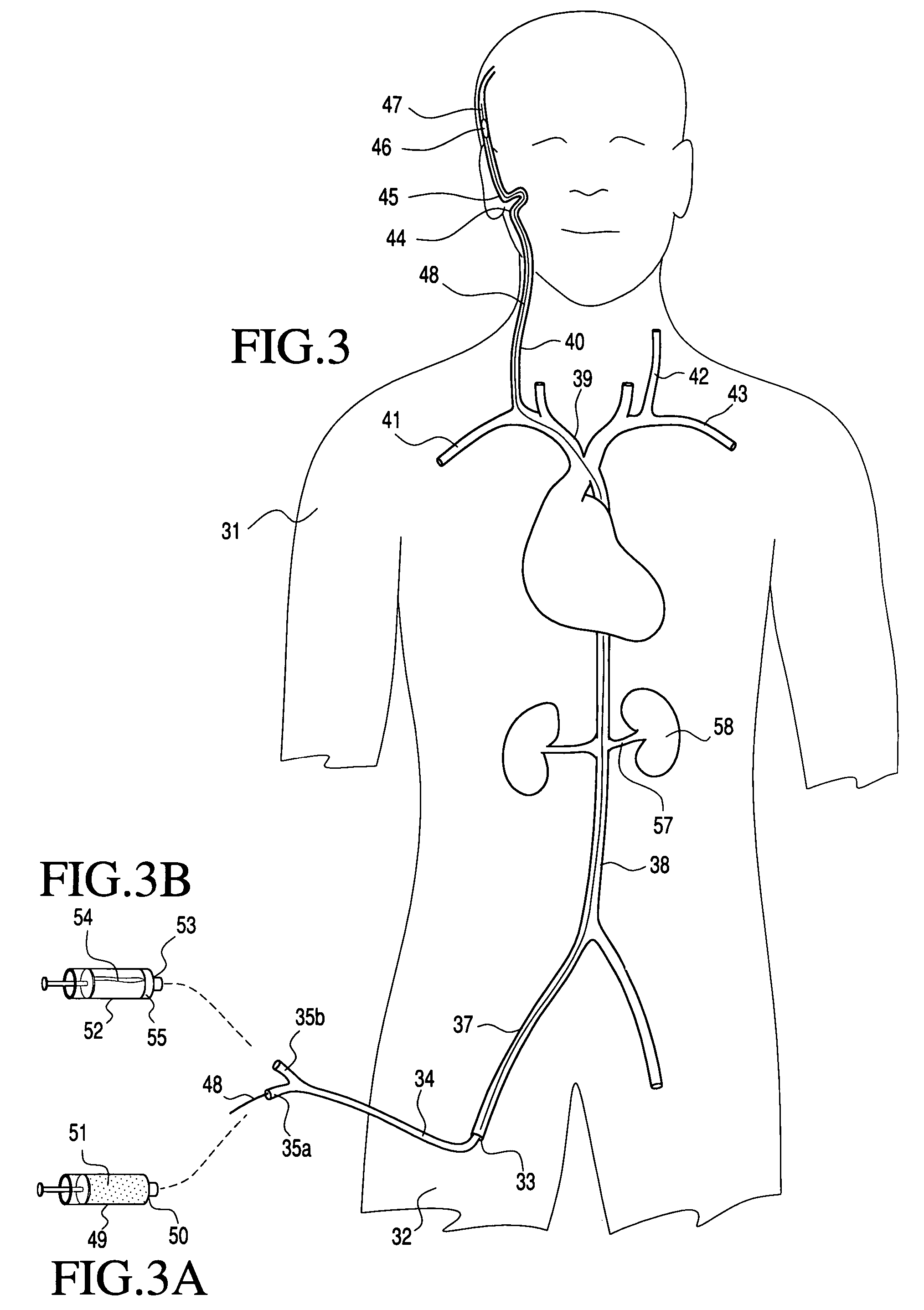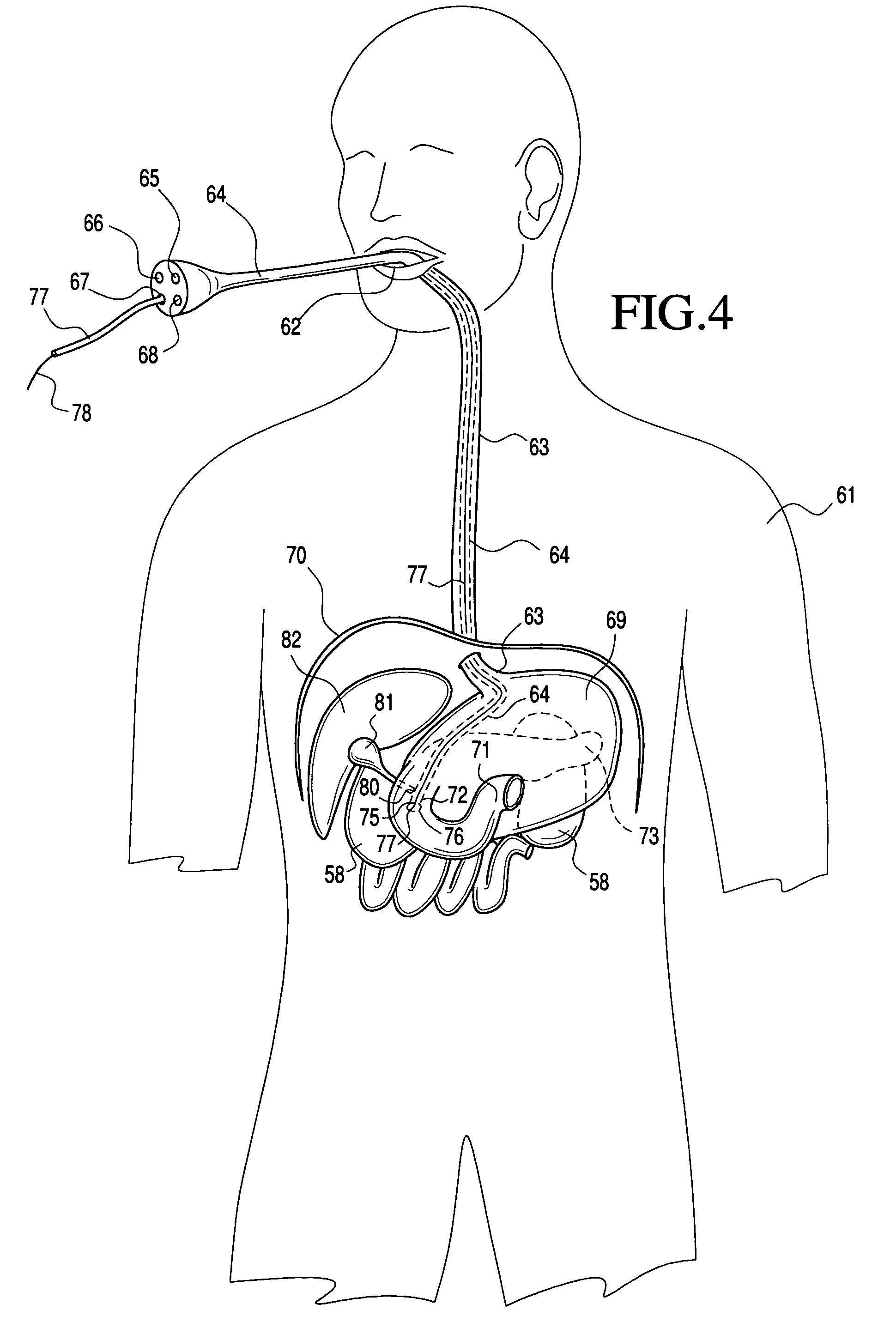Transluminal application of adult stem cells for body organ tissue repair
a stem cell and tissue technology, applied in the direction of skeletal/connective tissue cells, cell differentiation, catheters, etc., can solve the problems of irreversible loss of cardiac tissue function, cell necrosis or apoptosis, and detriment to local repair capacity, and achieve the effect of reducing the stimuli of cell growth
- Summary
- Abstract
- Description
- Claims
- Application Information
AI Technical Summary
Benefits of technology
Problems solved by technology
Method used
Image
Examples
Embodiment Construction
[0046]In an exemplary process that applies the principles of the present invention to repair of myocardial tissue, the ischemically injured cardiac tissue is subjected to invasion by stem cells, preferably adult stem cells, with subsequent differentiation into beating cardiomyocytes which are mechanically and electrically linked to adjacent healthy host myocardium, thereby resembling newly formed and functionally active myocardium.
[0047]Until recently it had been hypothesized by most researchers that adult stem cells are tissue specific. It was thought that a certain stem cell-like population exists in every organ and is capable of differentiation into this certain tissue with exceptions to this rule regarding repair in heart and brain. Relatively recent studies have indicated an underestimated potential of these cells. It has been shown that murine and human neural stem cells (NSC) give rise to skeletal muscle after local injection (see, for example, Galli R et al., “Skeletal myoge...
PUM
| Property | Measurement | Unit |
|---|---|---|
| time | aaaaa | aaaaa |
| time | aaaaa | aaaaa |
| diameter | aaaaa | aaaaa |
Abstract
Description
Claims
Application Information
 Login to View More
Login to View More - R&D
- Intellectual Property
- Life Sciences
- Materials
- Tech Scout
- Unparalleled Data Quality
- Higher Quality Content
- 60% Fewer Hallucinations
Browse by: Latest US Patents, China's latest patents, Technical Efficacy Thesaurus, Application Domain, Technology Topic, Popular Technical Reports.
© 2025 PatSnap. All rights reserved.Legal|Privacy policy|Modern Slavery Act Transparency Statement|Sitemap|About US| Contact US: help@patsnap.com



